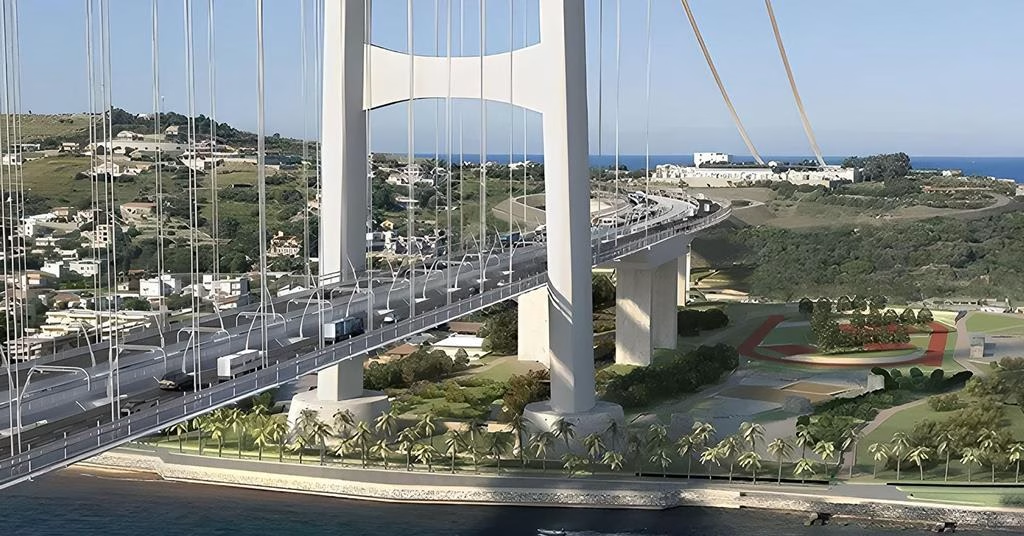Italy has officially approved the construction of the Strait of Messina Bridge, a bold infrastructure initiative set to become the world’s longest suspension bridge. The €13.5 billion ($15.5 billion) project has received the green light from the interministerial committee responsible for strategic public works. Once completed, the bridge will stretch 3.7 kilometers across the Strait of Messina, with 3.3 kilometers suspended, exceeding Turkey’s Canakkale Bridge by over a kilometer. Italian Transport Minister Matteo Salvini described it as “the biggest infrastructure project in the West,” while Prime Minister Giorgia Meloni hailed it as an iconic feat of engineering.
Transforming Southern Italy’s Economy
Beyond its structural grandeur, the bridge is projected to spark a major economic revival in southern Italy. It is expected to create up to 120,000 jobs annually, as significant investment is channeled into roadworks and related infrastructure. The bridge’s design includes six road lanes and a double-track railway, capable of carrying 6,000 vehicles per hour and up to 200 trains per day. This will drastically cut travel time across the strait, from over 90 minutes by ferry to just 10 minutes by car. Pending legal clearance, preliminary construction could begin in late 2025, with full-scale work starting in 2026 and completion anticipated between 2032 and 2033.
Also Read European Investment Bank Approves €168M for Second Malta-Italy Interconnector Project
Environmental Concerns and Security Measures
Nevertheless, the project has not been without criticism. Environmentalists have expressed concern over its potential disruption to migratory bird paths and the adequacy of environmental impact assessments. Additionally, academics have questioned the bridge’s classification as “dual-use” infrastructure, warning it could become a military target in future conflicts. In response to these issues, Salvini has promised rigorous anti-mafia measures modeled after those used during Italy’s Expo 2015 and the upcoming 2026 Winter Olympics. Seismic safety also remains a priority, given the region’s earthquake-prone nature. Fortunately, engineers cite global examples to support the bridge’s resilience, including suspension bridges in Japan, Turkey, and California.
A Technological Masterpiece with Strategic Significance
At its core, the project represents a masterclass in modern engineering. The bridge will be supported by twin steel towers, each nearly 399 meters tall, and built to last 200 years. Its aerodynamic design, inspired by fighter jets, ensures both structural integrity and maritime clearance. Furthermore, the project holds strategic value: as a designated piece of national security infrastructure, it supports Italy’s efforts to meet NATO defense spending requirements. The construction will be led by Webuild, an Italian consortium that also designed Turkey’s Canakkale Bridge. This connection highlights how past innovation informs future breakthroughs, linking not just territories, but also ideas and expertise across borders.
Project Overview
Location: Connecting mainland Italy to Sicily across the Strait of Messina
Budget: Estimated at €13.5 billion ($15.5 billion)
Length: 3.7 km total, with a 3.3 km suspended span, the longest in the world
Capacity: Six vehicle lanes and a double-track railway; up to 6,000 vehicles/hour and 200 trains/day
Timeline: Construction may begin in 2026; expected completion by 2032–2033
Jobs Created: Projected to generate 120,000 jobs annually during construction
Builder: Led by Webuild, an Italian infrastructure group
Security Use: Classified as dual-use infrastructure to support NATO defense goals
Challenges: Environmental, seismic

